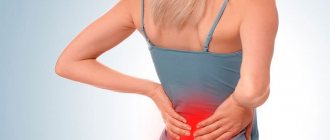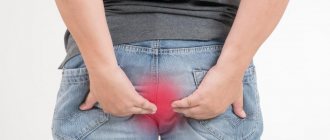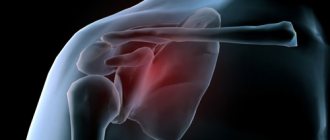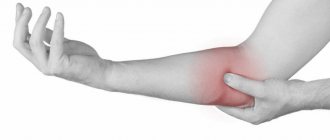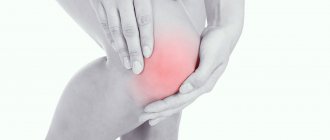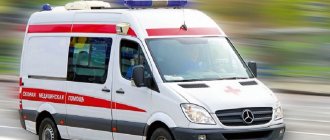People complain of pain between the shoulder blades much less often than discomfort in the lower back and neck, however, they also occur and can indicate a variety of diseases. Moreover, if pain in the lower back or neck can occur as a result of muscle strain, then discomfort between the shoulder blades is almost never of such a harmless nature, i.e. its appearance should be regarded as an unambiguous sign of the occurrence of disorders in the spine or internal organs and a reason for treatment to the doctor.
Types of back pain depending on the cause
Pain sensations are primary and secondary; each of these types can be caused by a wide range of conditions and diseases.
In this article we will try to consider only the most basic ones. 1. Nonspecific (primary). This type of pain has a direct connection with problems in the spine and surrounding tissues.
Causes of back pain associated with the spine:
- Scoliosis. Poor posture, leading to gradual curvature of the spine, displacement of the vertebrae and muscle strain.
- Osteochondrosis. The cause of the development of the disease is a decrease in the shock-absorbing capacity of the spine: damage to the intervertebral discs, rupture of the fibrous ring and, as a consequence, infringement of the disc nucleus. Pain sensations are localized in the area of the spine in which there are pathological changes. So, with osteochondrosis of the thoracic spine, back pain is localized in the thoracic region (the back hurts between the shoulder blades and under the ribs); with osteochondrosis of the lumbar spine, a person experiences pain in the lumbar region.
- Intervertebral hernia. Due to damage to the intervertebral disc, protrusion of the soft structures of the vertebrae occurs with the possibility of strangulation (regular and strangulated hernia). The pain is localized at the site of the hernia.
- Ankylosing spondylitis. It is characterized by back pain and limited mobility in the spine, which leads to a forced “leaning forward” posture in the patient.
- Osteomyelitis. The cause of the disease is an infectious process that has developed in the spinal column. The patient feels that the pain affects not only the spine, but also the back muscles.
- Spinal injuries. In this case, the cause of back pain is injury and its accompanying complications. The intensity of pain and its location are directly related to the type of injury and the affected part of the spinal column.
In 40–50% of cases, the causes of back pain are damage to the joints and ligaments of the spine (skeletal pain). Another 3–5% of severe back pain is associated with damage to the roots of the spinal cord (radicular pain).
Back pain associated with pathological changes in muscles:
- Fibromyalgia. The inflammatory process develops in the muscles surrounding the spine, is characterized by symmetry and can be chronic. In this case, the back muscles along the entire spine hurt. The important point is that peak pain occurs when certain areas are pressed.
- Polymyositis. Hypothermia can trigger the disease. As a result of the development of the disease, the patient experiences muscle weakness and pain, which intensifies when trying to make a turn.
- Polymyalgia rheumatica. The etiology of the disease is not clear. Infectious diseases that lower immunity can serve as a trigger. It manifests itself as pain that increases as the disease progresses and can cover all areas of the back. Severe back pain impairs mobility to such an extent that the patient is unable to move independently. A clear asymmetry is visualized in the back.
- Charcot's disease. Symptoms are caused by inflammation in the peripheral nerves along the spinal column. As a result of the pathological process, in addition to fairly intense pain, there is a change in the person’s gait.
In 50–60% of cases of nonspecific back pain, their localization is in the muscles.
2. Specific (secondary pain). This type of pain, despite its localization in the back, is often not directly related to diseases of the spinal column or the surrounding muscular skeleton. The causes of specific pain are extremely varied, but the most dangerous are cancer. Thus, pain radiating to the back can be caused by a malignant neoplasm in the area of the mammary glands, lungs or prostate, which provokes metastasis of the spine.
Diseases that cause specific pain include:
- Pinched nerve roots in the chest. Most often this leads to the development of intercostal neuralgia. The pain in this case is localized at the pinched site. Thus, intercostal neuralgia can manifest itself: pain under the shoulder blades, pain in the back under the ribs (on the side where the pinching occurred). Soreness has varying degrees - from aching to sharp, shooting. Most often, pain occurs when moving or pressing on the affected area. This fact is the main difference between intercostal neuralgia and diseases of the heart and lungs, which can also manifest as pain under the left (or right) shoulder blade from the back.
- Diseases of the gastrointestinal tract. Pain is most often provoked on the right side; in some cases, it can spread to the left side of the body. For the most part, pain is localized in the lumbar and sacrolumbar regions. Quite strong pain is characteristic of pathologies associated with manifestations of diseases of the pancreas, colon diverticulum, intestinal obstruction, retrocecal appendicitis, etc.
- Ulcerative lesions. Ulcerative lesions of the organs of the upper abdominal cavity (peptic ulcer of the duodenum and stomach) can manifest themselves in the form of pain in the thoracic and lower lumbar back. If the lower part of the abdominal cavity is affected (ulcerative colitis), pain is localized in the lumbar region. The severity of pain may vary, but most often reaches its peak at night.
- Appendicitis. In acute appendicitis, in cases where the vermiform appendix (appendix) is located behind the cecum, the back hurts in the lumbar region. The pain is alternating in nature and can vary from aching, mild to acute, intense.
- Kidney diseases. Quite often they manifest themselves as pain in the lumbar region. This type of manifestation is characteristic of pyelonephritis and chronic glomerulonephritis. Differentiation from pathologies that have a direct connection with the spinal column occurs based on the analysis of other clinical manifestations and research results.
- Urolithiasis disease. With renal colic, the back hurts in the lumbar region. The pain is pronounced, intense, occurs suddenly and does not depend on the position of the body. Back pain in the lower back and with coral nephrolithiasis. Manifestations of the pain syndrome are low-intensity, the pain is rather aching in nature.
- Diseases of the female reproductive system and menstrual pain. In these cases, the pain is most often localized in the lower back.
- Neoplasms in the pulmonary system. In this case, pain appears at the stage when the lungs undergo germination of peripheral tumor elements (metastases) into the pleural area and chest wall. The nature of the pain is intense and debilitating.
- Cardiovascular diseases. The most common causes of pain localized in the thoracic back are myocardial infarction and stroke. As a rule, these diseases are accompanied by pain between the shoulder blades.
- Inflammatory processes in the joints. Infectious arthritis can cause pain to radiate from the affected joint to nearby areas, including back pain.
For the most part, the causes of pain in the back are identical for representatives of both sexes, but it is necessary to identify a number of diseases that differ in gender predisposition.
Treatment
Help before diagnosis
Most non-drug measures are aimed at preventing pain between the shoulder blades: developing and maintaining correct posture, eating a balanced diet without harmful foods, leading an active lifestyle and playing sports. In case of severe pain during the diagnostic search, the doctor prescribes non-narcotic analgesics, recommends limiting mobility, and, if necessary, prescribes strict bed rest.
Conservative therapy
In the treatment of back pain between the shoulder blades, a differentiated approach is used - the therapeutic regimen is selected individually, taking into account the leading disease that caused the symptoms and concomitant pathologies. In case of orthopedic problems, posture correction with the help of corsets and other orthoses comes to the fore. The following groups of medications are used to treat the causes of pain:
- Nonsteroidal anti-inflammatory drugs
. Prescribed to relieve discomfort in diseases of the osteoarticular system, as well as to eliminate inflammation and speed up recovery. NSAIDs are also effective for diseases of the respiratory organs and mediastinitis. - Antisecretory drugs
. Proton pump inhibitors and H2-histamine blockers are the basis for the treatment of GERD and achalasia cardia. The drugs reduce damage to the esophagus from acidic stomach contents and relieve pain. To quickly relieve the burning sensation, non-absorbable antacids are taken. - Antibiotics
. Massive antimicrobial therapy is indicated for acute forms of mediastinitis to destroy pathogens and prevent bacterial complications. Medicines are selected empirically. A combination of 2-3 agents is introduced to act on all possible types of microbes. - Cytostatics
. Polychemotherapy is selected for some forms of mediastinal cancer as preparation for surgery or as palliative care. Immunosuppressants are sometimes recommended for patients with severe forms of ankylosing spondylitis.
Patients with acute conditions (aortic dissection, fulminant mediastinitis) are hospitalized in the intensive care unit. The goal of treatment is to get rid of the state of shock: for this purpose, cardiotropic medications, infusion solutions are used, and oxygen support is provided. To relieve pain, narcotic analgesics and tranquilizers are administered.
Non-drug methods play an important role in the treatment of musculoskeletal diseases. Special exercise therapy complexes are prescribed to strengthen the muscle corset and form an even posture. Manual manipulation, kinesiotherapy, orthopedic massage of the chest, back, and lower back show good results. A number of physiotherapeutic methods are used: electrical stimulation of the back muscles, peloid therapy, general ultraviolet radiation.
Surgery
For persistent deformities of the spinal column, surgical correction of scoliosis is recommended. Surgical treatment for osteochondrosis is resorted to in the case of spinal compression: the intervertebral hernia is removed and the spinal canal is decompressed. As a rule, minimally invasive techniques are used: puncture vaporization of the disc, microdiscectomy.
Surgical interventions are indicated for complicated forms of diaphragmatic hernia and severe stenosis of the esophagus. The hernial orifice is sutured with crurorrhaphy, gastropexy or fundoplication, resection and plasty of the esophagus. Emergency surgery is the only treatment for a dissecting aneurysm. Vascular surgeons perform resection of the damaged area with reconstruction of the aorta.
Back pain in men
Although the causes of back pain are mostly the same for both sexes, there are a number of diseases that men are more susceptible to due to their lifestyle.
Such predisposing factors include:
- work that involves lifting and carrying heavy objects;
- strength sports (including various martial arts, powerlifting, etc.);
- bad habits.
As a result, diseases of the musculoskeletal and cardiovascular systems may occur more often in men than in women.
Specific “male” diseases that can cause back pain are various prostate pathologies.
Prostatitis is an inflammatory disease of the prostate gland. At the beginning of the disease, the pain syndrome is localized in the groin, scrotum and lower abdomen, but in the second stage and in cases where the disease has become chronic, the pain spreads to the back.
The localization of pain in this case can either be concentrated in the lumbosacral region or spread to the entire back. This is due to the fact that the inflammatory process affects the nerve endings, which envelop this organ in large quantities. The intensity of pain is directly related to the stage of the disease. Thus, in the acute phase, pain is characterized as acute and short-term. In the chronic form, the pain syndrome is not very pronounced and is often permanent.
In this case, a urologist makes a diagnosis and prescribes treatment.
Back pain in women
In some cases, back pain in women may have a specific nature associated with the characteristics of the body and the processes occurring in it. We are talking primarily about the reproductive sphere.
As a rule, pain associated with gynecological diseases is localized in the thoracic and lumbosacral regions. The most common reasons include:
1. Menstrual cycle. During menstruation, a woman's hormonal background changes, which leads to a number of negative manifestations. This is primarily due to a decrease in the level of progesterone, which is responsible for the intensity of the pain threshold. A decrease in the pain threshold leads to the fact that even minor pain sensations become more pronounced. Also, hormonal changes lead to irritation of the intestinal walls and fluid retention, which provokes an increase in the volume of some organs and, as a result, compression of the nerve endings of the lumbar spine. The combination of these factors provokes the occurrence of back pain.
2. Pregnancy. Lower back pain in this case can be divided into two groups:
– First trimester pain. If painful sensations are accompanied by additional symptoms (bloody discharge, increased body temperature, etc.), we may be talking about the risks of miscarriage. – Pain in the second half of pregnancy. Most often, such pain is associated with physiological changes, namely: active growth of the fetus, provoking a change in the center of gravity in the position of the body, and preparation of the pelvis for the upcoming labor. 3. Diseases of the reproductive system. Most of the pain is concentrated in the lumbar region, which is explained by the topography of the female reproductive organs. The most common causes of this manifestation of pain are ovarian cysts, adnexitis, ectopic pregnancy, endometriosis, etc. 4. Menopause. During menopause, powerful changes and fluctuations in hormonal levels occur. Such a restructuring of the body leaves its mark on many systems of the female body. First of all, the skeletal system suffers, which, under the influence of hormonal changes, becomes more fragile and susceptible to various kinds of diseases. 5. Large breasts. A large bust size in combination with poorly supporting underwear creates additional stress on the spinal column, and, as a result, a woman has back pain in the area of the shoulder blades and lower back. 6. High heels. Wearing high-heeled shoes leads to the development of a number of diseases associated with pathological changes in the musculoskeletal system and back pain.
Back pain due to coronavirus
Coronavirus infection leads to damage to many organs, but the lungs are primarily affected. Therefore, pain between the shoulder blades or under them is often a manifestation of inflammation that has developed in the lung tissue. Depending on which lung is more affected, the patient will feel pain under the left or right shoulder blade.
In addition to damage to the lung tissue, there is general intoxication of the body and an increase in temperature, which can also cause pain (ache) in the back and limbs.
Back pain after coronavirus is explained by the fact that the disease can not only damage the nervous system, but also, against the background of a general decrease in immunity, chronic diseases, including internal organs and the musculoskeletal system, worsen.
Back pain after sleep
The reasons why your back hurts after sleep can be:
- work involving physical activity and heavy lifting;
- low back muscle tone;
- history of intervertebral hernia and osteochondrosis;
- prolonged hypothermia of the back;
- curvature of the spine, leading to muscle strain and uneven contraction;
- excess body weight, resulting in increased load on the back area;
- stressful situations;
- uncomfortable sleeping place.
Unpleasant sensations can have varying intensity and appear under the ribs, in the lower back, between and under the shoulder blades.
To eliminate pain that occurs after sleep, it is necessary to exclude all provoking factors and consult a doctor to prescribe treatment.
How to avoid pain between the shoulder blades?
- The most important thing is movement. A person needs moderate regular physical activity - without it, bones will weaken, muscles will relax, and the general condition of the body will gradually deteriorate every year. But it’s important to maintain a balance: you can’t completely exclude light exercise from your life, nor overexert yourself. With strong pressure on the spine, you can get various fractures, injuries and hernias. Moderate exercise 3-4 times a week for one and a half to two hours a day will be more than enough.
Therapeutic exercise will be an excellent prevention for back diseases
- If the pain between the shoulder blades has already begun to bother you, it is advisable to give your back rest for several days. It will be enough to at least avoid physical activity, and at best, just lie down for 2-3 days.
- Proper nutrition. Metabolism is disrupted due to fast food, excessively fatty foods, sweets and starchy foods. It is better to minimize the consumption of such products. Vegetables, fruits, cereals, fish, stewed or steamed foods will become more healthy.
Eating right is very important if you want to keep your body healthy.
Compliance with these rules requires constant self-control, but monitoring your health, in addition to benefits, also brings pleasure, because it is accompanied by weight stabilization, a toned body, greater endurance, improved general condition, ease and longer life expectancy.
Back pain - which doctor should I contact?
The primary diagnosis of pain in the back area is carried out by a general practitioner. If necessary, a number of additional examinations and consultation with highly specialized specialists may be prescribed:
- neurologist;
- gastroenterologist;
- gynecologist;
- urologist;
- pulmonologist.
To make an accurate diagnosis, it is necessary to conduct a detailed analysis of the patient's condition. For these purposes, the doctor may prescribe a number of additional studies:
- Lab tests. Most often, this list includes general and biochemical blood tests, urine and stool tests, and in some cases, analysis of hormone levels. These studies help identify possible inflammatory processes and infections. If certain diseases or an oncological component are suspected, the doctor may prescribe a number of specific studies (biopsy, tumor markers, etc.).
- Hardware research. They help to obtain a more clear picture of the course of the disease, which cannot be achieved with visual examination and palpation. The most commonly prescribed are radiography, MRI, and ultrasound.
How is diagnosis carried out?
Determining the causes of pain between the shoulder blades is not an easy task because it is a symptom of a large number of diseases. To make a correct diagnosis, the doctor will need to conduct several studies and collect tests.
The doctor must conduct a diagnosis, which will include various tests and images to accurately determine the disease
If for a hernia it is enough to take an MRI and CT scan, as well as a blood test, then in this case you will also have to undergo an X-ray and an electrocardiogram, be examined by a cardiologist, a surgeon, and for women, also by a gynecologist. Sometimes doctors only perform palpation, and in more “advanced” cases this is enough to determine the correct diagnosis.
